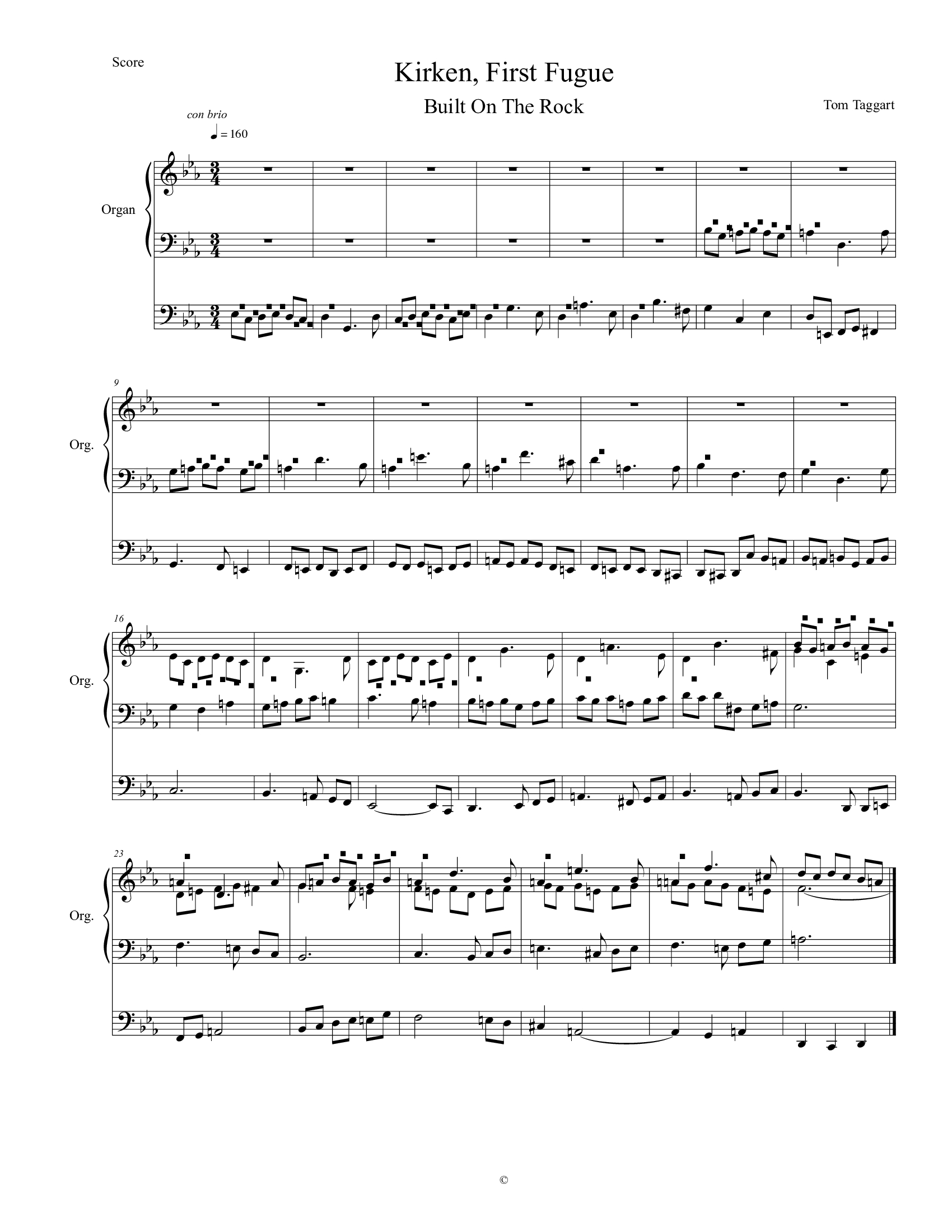Quadruple Fugue On Kirken
A towering organ work of architectural brilliance—four fugues woven into a breathtaking tapestry of sacred grandeur.
About This Piece
The Quadruple Fugue on Kirken is a monumental achievement in both scale and craftsmanship—a towering, 15-minute organ work designed for the grandest of instruments and the most seasoned performers. Across four interconnected fugues, the piece unfolds like an architectural marvel, each new section adding structure, depth, and expressive power. From its opening motif—a vigorous six-measure theme—the composition builds with relentless logic and grandeur. Despite its technical demands and structural complexity, the piece never loses its sense of musicality. Themes evolve through inversion, retrograde, augmentation, and canonic development, yet they always remain rooted in the majestic spirit of Kirken. The contrapuntal density grows movement by movement, culminating in a breathtaking final fugue where all four subjects are combined in a five-voice toccata coda—capped by the final phrase of the chorale thundering in the bass. This is not merely a fugue—it's a sonic cathedral, constructed from sound, discipline, and joy.
Piece Details
Notes from the Composer
One may use each of the four fugues in my Quadruple Fugue In C Minor On Kirken in recital or during an Easter Concert. Almost eight-hundred measures are used to present this piece for an organist of the first water and on an instrument of grand design. This piece is very architectural. Imagine the grandest stately home in the UK: The west-wing block—three stories high, ten windows wide; a low one-story tall fifteen-windows wide connection from the west wing, leading to a bell tower; it flanked by a two-story, six-windows wide (each flanked by pilasters); next the main entrance, six massive Corinthian thirty-foot columns supporting a pediment all atop a twenty-step platform; then a two-story, eight-windows wide arcade; and then the east wing-- a shallow-domed three-story, fifteen window-wide massive block. A six-measure theme of much energy projects itself upward. The composer inverts the subject and then quotes Kirken's first phrase and then the second above the subject in four-voice counter point. The second fugal subject ascends a fifth chromatically and then progresses through eight measures. Its development uses the fugue's second motif across the manuals. Later, the composer presents a canon between the subject and the subject in retrograde. The first subject returns and states against it two more Kirken phrases. Lastly, the first and second subjects appear in a double fugue. The third subject is in the form of a presto trio, using pipes of a much smaller scale. The first subject returns allowing two more Kirken phrases to appear. A triple fugue of the first three subjects introduces the final fugue The majesty of a fugal subject in dotted half-notes follows. This subject is stated as is and in multiple canonic iterations, inverted, augmented, in diminution. In a five-voice coda involving a blistering toccata, while the fourth subject then thunders in the bass supporting the first three fugal subjects appearing above it along with the last phrase of Kirken.
Additional Notes
- •Concert-Scale Work: At over 15 minutes and 795 measures, this piece functions as a recital centerpiece or concert finale for Easter or celebratory events.
- •Progressive Complexity: Each fugue builds upon the last—starting from contrapuntal clarity and moving toward dense five-voice combinations in the coda.
- •Chorale Integration: The Kirken melody is introduced in fragments throughout the fugues, culminating in a final appearance beneath a complex counterpoint of fugue subjects.
